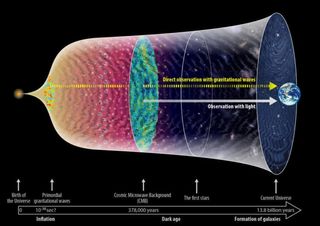Do you hear the hum of the universe?

Let’s try to imagine the Big Bang, the moment of the birth of the universe, as a large stone falling into a pond. This event will create a series of ripples in space-time, a kind of buzz that can be “heard” everywhere for about 13.5 billion years.
This combination of signals is called the cosmic microwave background radiation and refers to the cosmic background radiation that permeates everything we see and is now considered evidence of the existence of this “burst”.
Now we have discovered that along with this radiation there are also gravitational waves, and they are perhaps even more important for tracing the history of everything around us.
“Detecting the random background of gravitational radiation could provide a wealth of information about astrophysical source clusters and processes in the early universe that would not be accessible by any other means,” explains theoretical physicist Susan Scott of the Australian National University and ARC.
“For example, electromagnetic radiation does not provide a picture of the universe prior to the time of the last scattering (about 400,000 years after the Big Bang). However, gravitational waves can give us information until the onset of inflation, only ~10-32 seconds after the Big Bang.”
In addition, he added, “We hope that the discovery and analysis of the gravitational wave background will revolutionize our understanding of the universe, in the same way that observations of the cosmic microwave background and its anisotropy do.”

“Pop culture advocate. Troublemaker. Friendly student. Proud problem solver.”







:quality(70)/cloudfront-us-east-1.images.arcpublishing.com/metroworldnews/KAMPU362RJDWBEEJAHCQQIMWEE.jpg)



